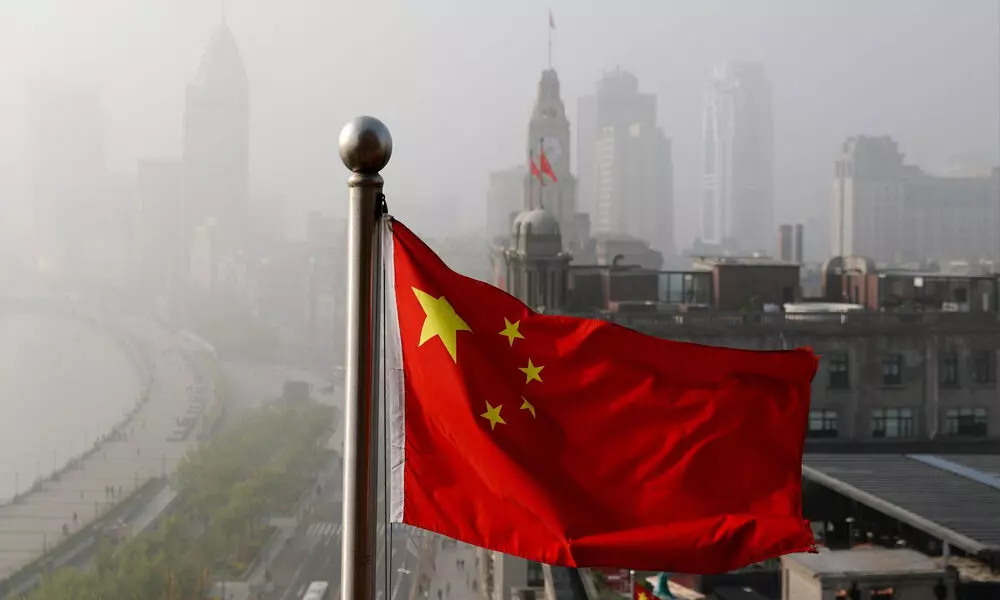If China's population shrinks, it's the world's problem
Annual average growth of 0.53% in the past decade was the slowest since 1953
image for illustrative purpose

China's slowest population growth in decades may be felt more acutely beyond its borders than within them. The economy will keep humming and incomes can continue to climb, albeit at a slower rate. The rest of us, however, will need to adjust to a persistently slacker pace of global expansion and the prospective ebbing of deflationary pressure. The caricature of China as an unlimited supplier of cheap labour holding down the cost of everything from dishwashers to dolls should be consigned to the history books.
Beijing's once-in-a-decade census showed there were 1.412 billion people in China last year. The annual average growth of 0.53 per cent in the past decade was the slowest since 1953. Longstanding trends became more pronounced: The working-age population slumped to 63.4 per cent from more than 70 per cent a decade ago, while the share of residents aged 60 and above jumped. More than half of Chinese citizens now live in cities.
While it's possible that China's headcount will actually decline in a few years, it doesn't mean a crisis is looming. Some of the world's wealthiest economies have wrestled with population retreat — or something close to it. Japan's population peaked in 2010 and South Korea logged its first dip in 2020. Singapore reported its first decline since 2003 last year. Each of these nations has long contended with an aging society and a diminished fertility rate, while citizens have consistently resisted prodding by officials to churn out more kids. Yet each has first-class infrastructure, great schools, high standards of living and a niche in technology supply chains that gives them a shot at long-term prosperity in the pandemic era.
China need not fear for its commercial viability just because this inevitable byproduct of progress has caught up with it. After all, it's a relatively common pattern of economic development: Living standards rise, people spend more time in school, get married later, wrestle with more expensive living costs and want to spend more on the children they do have. Even if Beijing has taken steps to reverse the damaging one-child policy imposed under Mao Zedong, I doubt it will make much difference. The broader global trend may be too entrenched for even Beijing's state muscle.
The consequences for the rest of the planet may be more significant. The world's economic output has been driven by China the past few decades, especially since the financial crisis of 2007-2009. Its gross domestic product has increased at an average annual rate of about 8 per cent since 2000. The equivalent figure for the U.S. has been a bit less than 2 per cent. As things stand, China will contribute more than one-fifth of the total increase in global GDP in the five years through 2026, according to Bloomberg calculations based on International Monetary Fund forecasts published April. The U.S. will account for 14.8 per cent, with India and Japan chipping in 8.4 per cent and 3.5 per cent, respectively. Anemic population growth, or an outright drop, is likely to mean slower overall expansion, even if GDP per capita may continue to climb. Assumptions about any expected contribution may need to be rethought.
Also up for debate is persistently low inflation, something central banks everywhere first welcomed but now increasingly worry about. China's ascent from an impoverished backwater to the workshop of the world and premier exporter reflected, in large part, the country's ability to offer vast amounts of relatively cheap labor to multinational companies and their suppliers. In the process, the country was a major force in holding down prices of goods destined for shelves in the U.S. and Europe. The benefits of this era may now be past, thanks to a contracting labor market. "China's role in the global economy has now changed from being an exporter of deflation to a more neutral one now and increasingly inflationary into the future," wrote Charles Goodhart and Manoj Pradhan in their 2020 book "The Great Demographic Reversal: Ageing Societies, Waning Inequality, and an Inflation Revival."
This isn't all bad news, at least right away. A Chinese model no longer based on inexpensive labour pumping out bargain-basement goods will erode one of the props that has kept inflation low, dangerously so in the view of doves at the Fed. Meanwhile, a stroll around parks, nightlife areas and shopping malls of pre-pandemic Tokyo show a declining population can still have plenty of vitality. The U.S. saw the second-slowest population growth rate in history last decade at 7.4 per cent — just ahead of 7.3 per cent during the Depression era — yet life goes on. If China aspires to world economic leadership, this is what it looks like. Sluggish demographics are part of the deal.

